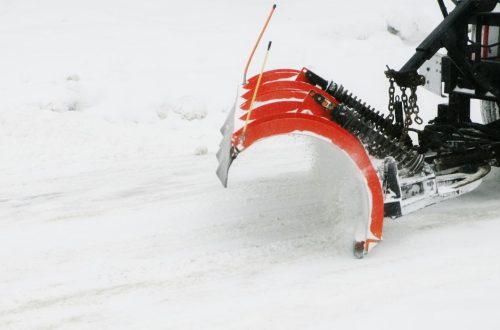
Garment Manufacturing Business How To Start, Cost, Raw Material, Profit, Plan, Idea | SkillsAndTech
The Garment Manufacturing Business is one of the wealthiest industries; if you are planning to start the garment manufacturing business here you will get the all detailed information and business plan about how to start textile manufacturing business.
Table of Contents
People are conscious about their outfit, therefore, they are looking for the trendy garments.
Therefore if you are planning to start the cloth manufacturing business you need to update with the latest trend and high-end technology that make your business more successive.
If you are passionate about the garment designing and sewing then the textile manufacturing business is the definitely best option for you.
The garment manufacturing business does require purchasing, styling, cutting, sewing and marketing of garments.
You need to come with proper business planning here in this article you will get the exact ideation about the garment manufacturing business.
How to Start Garment Manufacturing Unit
How to start garment manufacturing unit? Have you ever considered starting a garment enterprise? Beginning a garment factory isn’t a terrible thought. There are numerous areas for starting a company. I’m in the garment business and I will direct you to start the garment industry.
If you’re thinking about beginning a garment manufacturing business, you need to draw a garment business plan, go on and read this informative article till the finish. Through this guide, I’ll give you a hand with guides and measures you want to follow beginning a garment factory.
See Also:
It might be a small garment-producing unit, FOB fabricating, CMT fabrication unit, or subcontracting work for creating clothes.
Garment Business – Potential (Market Opportunity)
In this fashionable word people prefer ready-made garments, due to huge charge by tailor and the delay in the making of the handmade clothes also the handmade clothes are not meant for the fusion trend.
Therefore, the readymade clothes are preferred in both urban and suburban Areas, therefore, the market demand for the readymade garments are high.
By considering the market demand of the textiles you don’t have to worry about the potential of the garment making business.
The demand for the garment is not only in the local market but is also high in the export market it has made the tremendous growth in the export market from over past few years.
Textile manufacturing industry becoming more effervescence and the foreign investors are interested to invest in the garment manufacturing industry because the textile manufacturing industry has low-risk rate and high-profit margarine.
In this fashion oriented industry if you have to succeed then you must have to change with the fashion trends.
Garment Manufacturing Business – Registrations & Licenses
Registration of Firm:
You may start the small to medium garment manufacturing business either a Proprietorship or Partnership Firm.
If you are starting this textile manufacturing business as One Person Company, then you have to register your firm as a proprietorship.
For Partnership operation, you have to register as a limited liability partnership (LLP) or Pvt. Ltd. Company with Registrar of Companies (ROC).
GST Registration:
GST registration will provide you a GST number which is mandatory for every business.
Trade License:
obtain a trade license from local authorities.
Pollution Certificate:
Garment industry may lead to pollution; therefore, you need to get the pollution control license from the state government.
MSME/SSI Registration:
MSME/SSI Registration will allow you to get the government subsidy or facilities related to the garment industry if it has any.
Trade Mark:
you can secure your garment brand by simply registering for the trademark.
IEC code:
if you are planning to export your ready-made garment then you must have to apply for IEC code which is necessary to import or export of any product.
Textile Manufacturing Business – Area Required (Location)
Selection of area space for business is a very important task while selecting an area for the garment manufacturing business makes sure that the area should have sufficient space to locate the machines and storage room.
To start a garment manufacturing business minimum 600 sq ft area is sufficient to mount the machinery.
You can separate the area space into two compartments one is for machine work and another is to store the raw material and finished product.
Make sure that they are located is accessible by the raw material supplier and targeted market also the area location must have facilities like water supply, electricity supply and drainage facilities.
Garment Manufacturing Business – Raw Materials Required
You garment quality totally depend upon the raw material you used in the textile manufacturing therefore while selecting raw material to ensure that the raw material supplier provides you high-quality raw material in reasonable price
The main basic raw material used in the garment manufacturing industry is high-quality textile and fabrics.
Other than textile and fabrics the raw material required for garment manufacturing business are mentioned below
- Zipper
- Button
- Sewing Thread
- Washing detergent
- Printing material
- Packaging material
Garment Manufacturing – Machinery
Therefore different types of machinery are available in the market you have to choose the right machinery for the textile manufacturing business by considering your production demands, manufacturing unit capacity, and investment.
There are two main types of machines that are a fully automatic machine and semi-automatic machines, fully automatic machines are more efficient than the semi-automatic machines.
See Also:
Garment manufacturing machines are strong and durable if you maintain machinery properly then it will work for several years.
List of machinery used in garment manufacturing business
- Sewing machines
- Knitting machines
- Double needle bar machinery
- Braiding machines
- Stitch Machine
- Shirt printing machine
- Cutting machine
- Buttonhole making the machine
- Button stitching machine
- Pressing machine
- Garment washing machine
- Dryer machine
- Embroidery Machine
- Extractor machine
Fabric machinery tries to focus on essential machinery like a sewing machine, knitting machine, and printing machine
The investing cost of the textile machinery is high but you don’t have to worry about it because some machine providers will allow you to purchase the machinery on the EMI service, try to focus on the essential machinery like cutting machine, sewing machine, and knitting machine.
Garment Manufacturing Process
Garment manufacturing business includes the following steps
Step 1: Selection of Material
Once you purchase the textile dyed or blenched it as per the market demand
Step 2: Inspection
The fabric will be inspected by the fabric expert on simply laying the fiber on the inspection table against the light so if the fabric is uneven in color or shade it will be eliminated.
Step 3: Cutting and stitching
The inspected fibers are sent to the cutting table and the respective garment is marked by chalk as per required size and shape.
Cutting is carried with the help of cutting machine, once the garment is cut in required size it will be sliced out for the individual portion of the garment with the help of stitching machine.
Step 4: Washing
The garment is sent to the washing machine which contains the detergent and it will wash for next 3 to 4 hours in order to remove the dirt and the impurities present on the garments.
Step 5: Extracting and drying
After the washing process, the garment is poured into the extractor machine to remove excess water content and dry using a drying machine.
Once the washing and drying are done the final inspection is takes place.
If there any fault occurs in the piece it will be eliminated from the production.
Step 6: Pressing and packaging
The final product is individually pressed by a steam press machine to remove wrinkles and then send for the packaging in the cartoon packaging box.
How to sell Cloths/Garment
Selling Cloths/Garment – Local market (retail market)
You can sell your garments and textiles to your local retailers or you can open your own garment shop where you can sell your manufactured product.
See Also:
Selling Cloths/Garment – Wholesale market
You can sell your garment in your state wholesale market at a bulk amount
Selling Cloths/Garment – Online
B2B Websites:
Register your business on B2B websites like
- Alibaba
- Indiamart
- Tradeindia
- Exportersindia
Etc. you can sell your product on bulk orders.
B2C Websites:
Register your business on B2C websites like
- Amazon
- Flipkart
- Snapdeal
etc. where you can sell your product directly to the customer.
Export market for Cloths/Garment
The export market of the garments are also growing day by day.
If you are planning to export the textile you need to get the IECode which is mandatory to import and export of any product
Brand and Uniqueness
People are always searching for trendy garments and if you are the one who changes with the trend then it is easy to promote your product because people are already searching for it you just have to launch your products in the market.
Apart from all the traditional ways additionally you can create your own website or online shop where you can sell your trendy garments.
How to Start Garment Manufacturing Business | SkillsAndTech






6 Comments
Pingback:
Pingback:
Pingback:
Pingback:
Pingback:
Pingback: